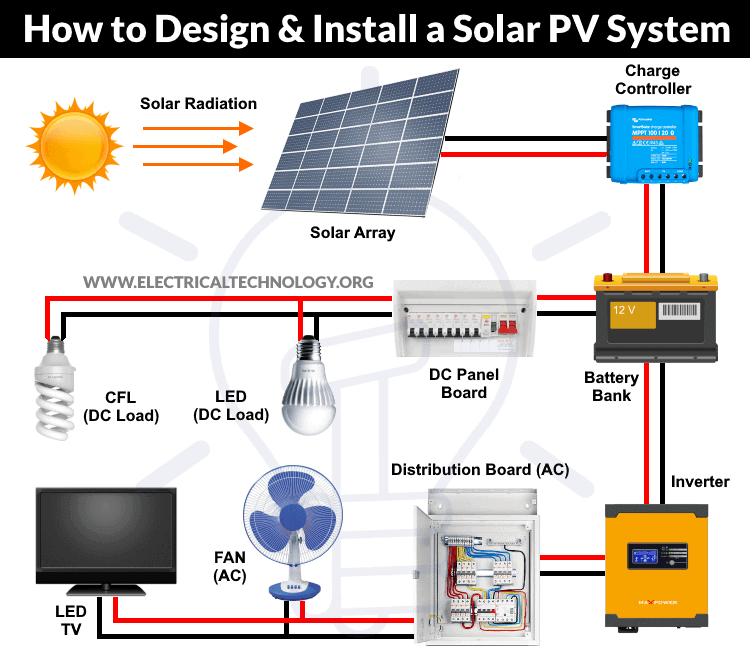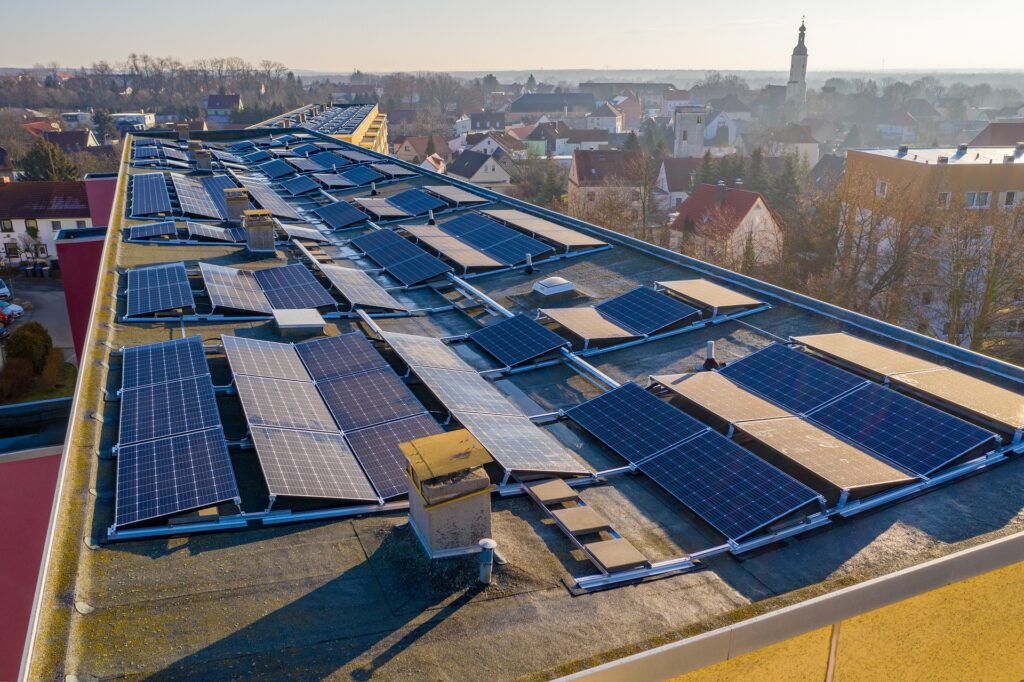How to Fix Solar Panel To fix a solar panel, identify the issue and troubleshoot the problem accordingly. Now let’s delve into the details.

Fixing solar panels involves diagnosing the problem, addressing the specific issue, and ensuring the system is restored to optimal performance. Here’s a step-by-step guide to help you troubleshoot and fix common solar panel issues:
1. Diagnose the Problem
1.1. Identify Symptoms
- Low Power Output: Noticeable drop in energy production.
- Physical Damage: Visible cracks, scratches, or discoloration.
- Electrical Issues: Faulty wiring or inverter problems.
- Monitoring System Alerts: Alerts or error messages from your solar monitoring system.
1.2. Use Monitoring Tools
- Check Output: Use a solar monitoring app or system to check the output of each panel.
- Inverter Check: Examine the inverter for any error codes or warning lights.
- Multimeter: Use a multimeter to test voltage and current output from individual panels.
2. Common Solar Panel Issues and Fixes
2.1. Dirty Panels
- Symptom: Reduced efficiency and power output.
- Solution: Clean the panels with water and a soft brush or cloth. Avoid harsh chemicals. For more details, refer to the section on Solar Panel Cleaning.
2.2. Shading Issues
- Symptom: Significant drop in performance due to shadows from trees, buildings, or other obstructions.
- Solution: Trim trees or remove obstructions. Consider installing microinverters or power optimizers to mitigate shading effects.
2.3. Wiring and Connection Problems
- Symptom: Inconsistent or no power output.
- Solution: Inspect all wiring for damage or loose connections. Tighten connections, and replace any damaged wires or connectors.
2.4. Inverter Issues
- Symptom: Inverter error messages or no power conversion.
- Solution: Reset the inverter by turning it off and on. Check the inverter manual for specific troubleshooting steps. If the issue persists, consult a professional technician or the manufacturer.
2.5. Physical Damage
- Symptom: Visible cracks, chips, or damage on the panel surface.
- Solution: Small cracks may not significantly impact performance immediately but should be monitored. For severe damage, the panel may need to be replaced. Consult with a professional for an accurate assessment.
3. Perform Regular Maintenance
3.1. Cleaning
- Frequency: Clean panels every 6 months or more frequently in dusty areas.
- Method: Use water and a soft brush or cloth. Avoid using high-pressure water or harsh chemicals.
3.2. Inspection
- Routine Checks: Inspect panels, wiring, and inverters regularly for signs of wear or damage.
- Professional Inspections: Schedule annual inspections by a professional to ensure all components are functioning properly.
4. Safety Precautions
4.1. Turn Off the System
- Safety First: Always turn off the solar panel system before performing any maintenance or repairs.
- Isolate Panels: If possible, isolate the panel or string you are working on to avoid electrical shock.
4.2. Use Proper Tools
- Insulated Tools: Use tools with insulated handles to prevent electrical shocks.
- Ladders and Harnesses: Use safety gear when working on roofs, including ladders and harnesses.
5. When to Call a Professional
5.1. Complex Repairs
- Electrical Issues: If the problem involves complex wiring or inverter issues, it’s best to call a professional electrician or solar technician.
- Warranty Repairs: If the panels or system components are still under warranty, contact the manufacturer or installer for repairs to avoid voiding the warranty.
5.2. Safety Concerns
- High Voltage: Solar panel systems involve high voltage. If you are not confident in your ability to safely perform repairs, hire a professional.
- Roof Safety: If working on a roof is required and you are not experienced or equipped for it, seek professional help.
As we strive towards sustainable and clean energy solutions, solar panels have become an increasingly popular choice. These panels harness sunlight and convert it into electricity, reducing dependency on fossil fuels. However, occasional maintenance or repair may be required to ensure their optimal performance.
We will explore various steps to fix a solar panel, ranging from identifying common problems such as loose connections or damaged cells, to more complex issues like inverter malfunctions. With a little knowledge and some basic tools, you can easily troubleshoot and fix many solar panel problems yourself, saving time and money. So, let’s get started on understanding how to fix solar panels and keep your renewable energy system functioning efficiently.

Credit: www.electricaltechnology.org
Assess The Issue
Assessing the issue with your solar panel is the first crucial step to identifying and fixing any problems. Whether it’s a drop in energy production or visible damage, a thorough assessment will guide your repair process effectively.
Identify The Problem
Start by visually inspecting the solar panel for any obvious signs of damage or malfunction. Look for cracks, discoloration, or loose connections. Also, check if the panel is accumulating dirt or debris, which can hinder its efficiency.
Evaluate The Damage
If you notice physical damage, such as cracks or scratches on the solar panel, document the extent of the damage. Take note of any areas with visible wear and tear, as well as any signs of water damage or corrosion on the panel’s surface.

Credit: m.youtube.com
Gather Tools And Materials
Before you begin fixing your solar panel, it is crucial to gather all the necessary tools and materials. Having everything on hand will help you work efficiently and complete the job without any interruptions. Below, you will find a list of required tools and a list of required materials:
List Of Required Tools
- Wire cutters
- Screwdriver set
- Socket wrench
- Wire strippers
- Multimeter
- Junction box
- Solar panel repair kit
List Of Required Materials
- Replacement solar cells
- Soldering iron
- Soldering wire
- Silicone sealant
- Electrical tape
- Connector cables
- Mounting hardware
Make sure you have these tools and materials ready before attempting to fix your solar panel. This will save you time and ensure that you have everything you need to successfully complete the repair. With the right tools at your disposal, you’ll be well-prepared to tackle the task of fixing your solar panel.
Disconnect The Solar Panel
To fix a solar panel, start by safely disconnecting it from the solar system. Turn off the power supply and then disconnect the panel’s wiring. Always follow the manufacturer’s instructions to ensure a safe disconnection process.
Turn Off The Power
Before you begin to disconnect the solar panel, it’s crucial to turn off the power to ensure your safety. Locate the solar circuit breaker or switch that controls the flow of electricity from the solar panel system. Switch it off to disconnect the power supply. By doing this, you prevent any potential electrical shocks or accidents while working on the solar panel.
Once the power is off, it’s time to remove the wires and connections from the solar panel. Start by identifying the positive and negative terminals on the solar panel and the connection points. Carefully disconnect the wires attached to these terminals using a screwdriver or appropriate tools. Loosen the screws or connectors by turning them counterclockwise to release the wires.
| Steps to Remove Wires and Connections |
|---|
| Step 1: Identify the positive and negative terminals on the solar panel and the connection points. |
| Step 2: Using a screwdriver or appropriate tools, carefully disconnect the wires attached to these terminals. |
| Step 3: Loosen the screws or connectors by turning them counterclockwise to release the wires. |
It’s important to handle these wires with care to avoid any damage. Remember to keep track of which wire goes where so you can easily reconnect them later. Using labels or a diagram can be helpful for this purpose. Taking pictures of the connections before disconnecting them can also serve as a reference during reinstallation.
Removing the wires and connections allows you to work on the solar panel more efficiently. It also prevents accidental damage to the wires and ensures the safety of both the equipment and yourself.

Repair Or Replace Faulty Components
Solar panels are complex systems, and like any technology, they can experience faults or damage over time. When faced with issues, homeowners must decide whether to repair or replace faulty components.
Inspect And Repair Damaged Panels
When dealing with damaged solar panels, the first step is to conduct a thorough inspection to identify the extent of the damage. Look for cracks, scratches, or delamination on the panels, as these can significantly impact their efficiency. If damage is minimal, it may be possible to repair the panels by sealing cracks or replacing individual cells. In cases of minor scratches, buffing them out can restore the panel’s performance.
If delamination is detected, it’s crucial to address it promptly to prevent further damage. Delamination occurs when the layers within the panel separate, compromising its structural integrity. In such instances, it’s best to consult a professional to repair or replace the affected panel.
Replace Faulty Parts
Even with regular maintenance, solar panels may experience issues with their components such as inverter failures, faulty wiring, or damaged connectors. When troubleshooting these issues, it’s important to first check if the warranty covers replacements. If the warranty has expired or the damage isn’t covered, replacing the faulty parts becomes necessary.
Replacement parts must be sourced from reputable suppliers to ensure compatibility and adherence to quality standards. Prioritize using OEM (Original Equipment Manufacturer) parts whenever possible to maintain the panel’s performance and longevity.
Reconnect The Solar Panel
Once you have identified and fixed any issues with your solar panel system, it’s time to reconnect the solar panel. This step is crucial in ensuring that your panels are properly functioning and generating electricity efficiently. Follow the steps below to reconnect the solar panel system:
Connect Wires And Components
First, you need to reconnect the wires and components of your solar panel system. This involves carefully attaching the positive (+) and negative (-) wires from the solar panel to the corresponding terminals on the charge controller. Ensure that the connections are secure and tightly fastened using connectors or wiring nuts.
Next, connect the charge controller to the battery bank. The charge controller regulates the flow of electricity from the solar panel to the battery and prevents overcharging. Connect the positive (+) and negative (-) terminals of the charge controller to the corresponding terminals of the battery bank. Double-check that the connections are properly aligned and secure.
If your solar panel system includes an inverter, connect it to the battery bank as well. The inverter converts the direct current (DC) energy stored in the batteries into alternating current (AC) electricity that can be used to power common household appliances. Connect the positive (+) and negative (-) terminals of the inverter to the corresponding terminals of the battery bank.
Test The System
After reconnecting the solar panel and its components, it is essential to thoroughly test the system to ensure that it is functioning correctly. Here’s how to perform a basic test:
- Check the charge controller for any error codes or warning lights. If there are any indications of malfunction, consult the device’s manual or contact a professional for assistance.
- Measure the voltage and current output of the solar panel using a multimeter. This will help you determine if the panel is generating the expected amount of electricity. Compare the readings to the specifications provided by the manufacturer to ensure proper operation.
- Test the battery bank’s voltage to confirm that it is receiving and storing the electricity generated by the solar panel. A voltmeter can be used for this purpose.
- If your system includes an inverter, check its functionality by plugging in a small electrical device. Ensure that the inverter is producing the correct voltage and that the device is operating as expected.
By following these steps and properly reconnecting your solar panel system, you can have peace of mind knowing that your renewable energy source is functioning optimally and providing clean electricity for your needs.
Regular Maintenance And Troubleshooting
Solar panel not working? Learn how to fix it with regular maintenance and troubleshooting. Keep your solar panels in top shape for maximum efficiency.
Regular maintenance and troubleshooting are essential for keeping your solar panels in optimal condition and maximizing their efficiency. By following a few simple steps, you can ensure that your panels continue to generate clean and renewable energy for years to come. In this section, we will discuss two important aspects of maintaining solar panels: cleaning and inspecting panels, and common issues and solutions that you may encounter.
Cleaning And Inspecting Panels
Regularly cleaning and inspecting your solar panels is crucial for their performance and longevity. Here are some steps to follow:
- Keep panels free from debris: Remove any dirt, leaves, or branches that may accumulate on the surface of your panels. This can be done using a soft brush or a leaf blower. Make sure to take safety precautions and avoid stepping on the panels.
- Check for shading: Inspect your panels to ensure that there are no obstructions casting shadows on them. Even a small amount of shading can significantly reduce their efficiency. Trim any nearby trees or plants if necessary.
- Wash panels: Use a mild detergent and a sponge or soft cloth to wash the surface of your panels. Avoid using abrasive materials or high-pressure water, as they can damage the panels. Rinse them thoroughly with clean water afterward.
- Inspect for damage: Regularly examine your panels for any signs of damage, such as cracks or loose connections. If you notice any issues, contact a qualified technician to assess and fix the problem.
Common Issues And Solutions
Despite regular maintenance, you may encounter some common issues with your solar panels. Here are a few problems you may come across and their possible solutions:
| Issue | Solution |
|---|---|
| Reduced power output: | Check for shading, dirt, or debris on the panels. Clean them thoroughly and ensure there are no obstructions blocking sunlight. If the issue persists, contact a professional. |
| Faulty wiring: | Inspect the connections and wiring for any loose or damaged parts. Tighten or replace them as necessary. If you are unsure, consult with an expert. |
| Inverter problems: | Check if the inverter is displaying any error messages. Restart it if possible, or contact a technician for further assistance. |
| Battery issues: | If you have a solar battery system, monitor its performance regularly. If you notice a significant drop in storage capacity, consult with a professional to determine if a battery replacement is needed. |
Regular maintenance and troubleshooting are vital for the smooth functioning of your solar panels. By incorporating these practices into your routine, you can ensure that your panels operate at peak efficiency, maximizing your clean energy production and reducing your reliance on conventional energy sources.
Frequently Asked Questions Of How To Fix Solar Panel
Can I Fix A Solar Panel On My Own?
Yes, you can fix a solar panel on your own by following the installation instructions provided by the manufacturer.
How Do I Troubleshoot A Malfunctioning Solar Panel?
To troubleshoot a malfunctioning solar panel, check for loose connections, debris buildup, and shading issues that may be affecting its performance.
What Should I Do If My Solar Panel Stops Generating Power?
If your solar panel stops generating power, contact a professional technician to diagnose and fix the issue, as there could be a problem with the wiring or the solar inverter.
Conclusion
Fixing solar panels is achievable with the right knowledge and tools. Regular maintenance and quick repairs can ensure the efficient functioning of solar energy systems. By addressing issues promptly, homeowners can maximize the benefits of solar power. Following these tips will help you maintain a sustainable and reliable energy source.